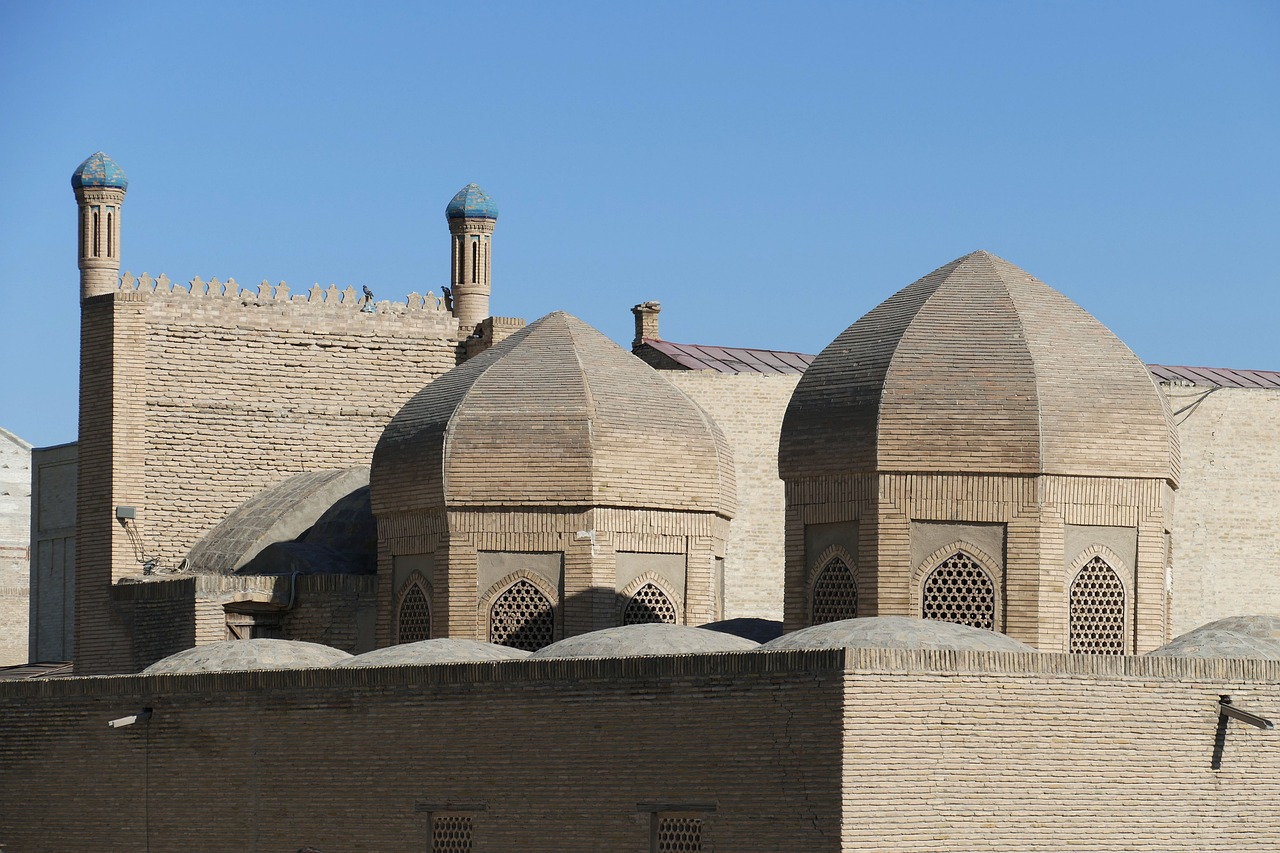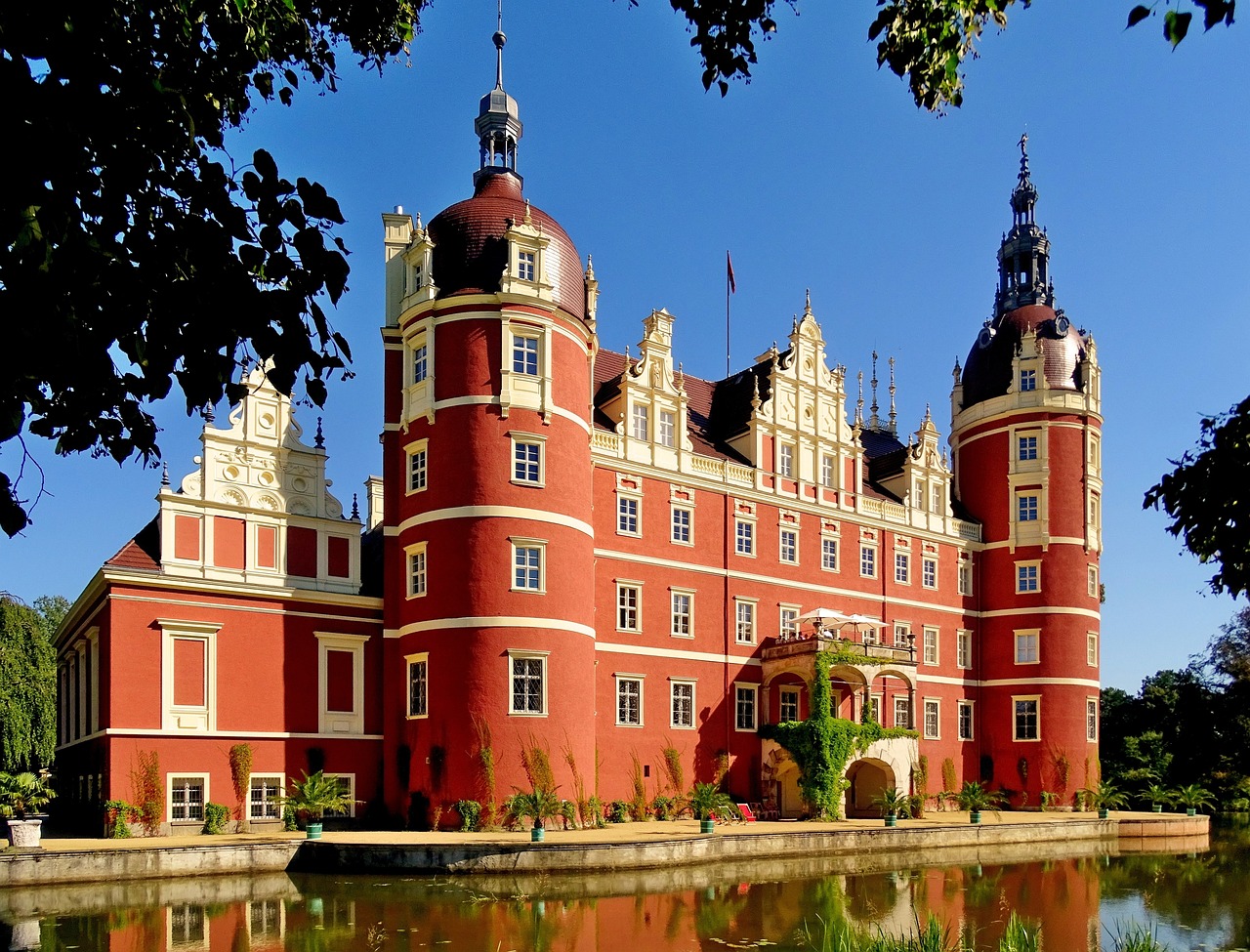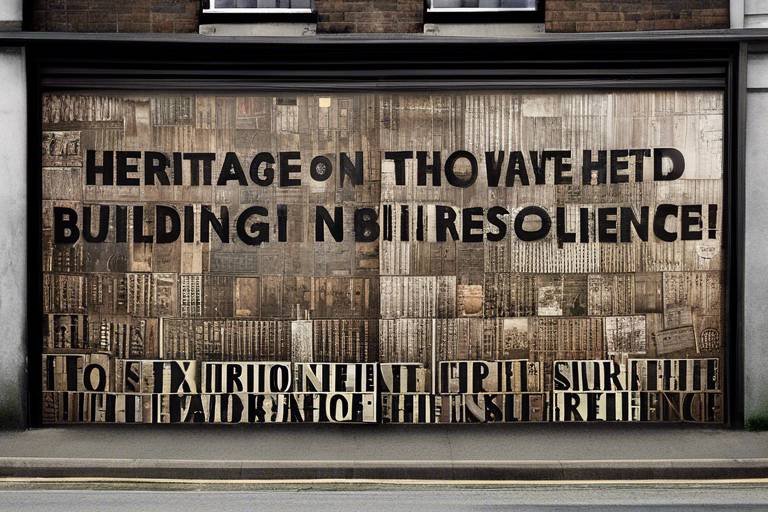The Importance of Heritage in Building Resilience
Cultural heritage serves as a cornerstone in the construction of resilience within communities, acting as a shield against the unpredictable storms of change and adversity. It is through the preservation and celebration of heritage that societies fortify their roots, drawing strength from the wisdom of the past to navigate the challenges of the present and future.

Preservation of Cultural Identity
Cultural identity is like a thread woven through the fabric of a community, connecting individuals to their roots and shaping their collective sense of belonging. Heritage sites and traditions act as anchors, grounding communities in their history and values even amidst turbulent times. In the face of modernization and globalization, the preservation of cultural identity becomes paramount in safeguarding the unique essence of a community.
By cherishing and safeguarding heritage sites and practices, communities can maintain a sense of continuity and resilience in the face of external pressures. These sites serve as repositories of stories, traditions, and knowledge passed down through generations, offering a glimpse into the past and guiding the way forward. They are not mere relics of the past but living testaments to the enduring spirit of a community.
Moreover, cultural identity is not static but evolves dynamically, adapting to changing circumstances while holding onto its core values. Through the preservation of cultural identity, communities can navigate the challenges of the present while staying rooted in their heritage. This continuity provides a sense of stability and strength, enabling communities to weather storms and emerge stronger on the other side.
Heritage sites and traditions also serve as bridges between generations, fostering intergenerational connections and passing on valuable knowledge and skills. By preserving cultural identity, communities ensure that their stories are not lost to time but continue to inspire and guide future generations. In this way, cultural identity becomes a beacon of resilience, guiding communities through adversity and uncertainty.

Learning from History
History serves as a powerful teacher, offering invaluable lessons that can guide us through challenging times and help us build resilience for the future. By delving into the stories and experiences preserved in cultural heritage sites, we gain a deeper understanding of how past communities navigated adversity and overcame obstacles. These historical insights provide us with a roadmap for developing effective resilience-building strategies and adapting to changing circumstances.

Community Engagement and Empowerment
Exploring how cultural heritage plays a crucial role in fostering resilience in communities, preserving identity, and promoting social cohesion during times of adversity and change.
Community engagement and empowerment through heritage preservation are vital components in building resilience. When communities actively participate in the preservation and promotion of their cultural heritage, they develop a sense of ownership and pride in their shared history. This engagement fosters a feeling of belonging and unity among community members, creating a strong support network that can withstand challenges and adversity.
By involving local residents in heritage conservation efforts, communities empower individuals to contribute to the preservation of their traditions and values. This empowerment not only instills a sense of responsibility but also encourages creativity and innovation in finding sustainable solutions to protect and promote cultural heritage.
Furthermore, community engagement in heritage initiatives can lead to the revitalization of public spaces, fostering a sense of community pride and cohesion. Through collaborative projects and events centered around cultural heritage, communities can come together, share experiences, and strengthen social bonds, ultimately enhancing resilience in the face of external pressures.
Additionally, community engagement in heritage preservation can serve as a platform for intergenerational knowledge exchange. By involving youth in learning about and preserving cultural heritage, communities ensure the continuity of traditions and values across generations, further solidifying the resilience of the community as a whole.

Heritage Conservation and Sustainable Development
Heritage conservation is not merely about preserving the physical remnants of the past; it is about safeguarding the essence of a community's history and traditions for future generations. By protecting cultural heritage sites, we are not only maintaining a link to our roots but also laying the foundation for sustainable development practices. These sites serve as living testaments to our shared history and provide valuable insights into the ways in which our ancestors interacted with their environment.
Moreover, heritage conservation contributes to economic growth by attracting tourists, creating job opportunities, and stimulating local businesses. The restoration and maintenance of heritage sites often require skilled labor and specialized services, leading to the growth of heritage-related industries. Additionally, heritage tourism can help revitalize struggling economies, especially in times of crisis when other sectors may be facing challenges.
Furthermore, cultural heritage plays a crucial role in environmental conservation efforts. Many heritage sites are located in natural settings that require protection from degradation and overexploitation. By promoting sustainable practices in the management of these sites, we can ensure that they remain intact for future generations to enjoy.

Heritage Tourism and Economic Resilience
Exploring how cultural heritage plays a crucial role in fostering resilience in communities, preserving identity, and promoting social cohesion during times of adversity and change.
Heritage tourism not only offers a glimpse into the past but also serves as a powerful driver of economic resilience for communities. By attracting visitors to historical sites, heritage tourism creates opportunities for job creation and revenue generation, especially in times of crisis. The infusion of tourism dollars can provide a much-needed economic boost, contributing to the revitalization of local economies.

Integrating Traditional Knowledge into Resilience Strategies
Traditional knowledge passed down through generations holds invaluable insights that can significantly enhance modern resilience strategies. By integrating these time-tested practices into contemporary approaches, communities can bolster their preparedness and response mechanisms in the face of adversity. Imagine traditional wisdom as a treasure trove of resilience techniques, waiting to be unearthed and utilized for the benefit of society.
Through a collaborative effort between elders, community members, and resilience experts, traditional knowledge can be harnessed to inform decision-making processes and shape effective strategies. This integration not only honors the heritage and wisdom of ancestors but also ensures that lessons learned from past experiences are not forgotten but rather incorporated into present-day resilience-building initiatives.
Furthermore, traditional practices often emphasize sustainability, harmony with nature, and community cohesion, all of which are essential elements in fostering resilience. By tapping into these principles, communities can develop holistic approaches that address not only the immediate challenges but also the long-term well-being of both people and the environment.
One example of integrating traditional knowledge into resilience strategies is seen in indigenous communities that have long relied on nature-based solutions for disaster risk reduction. By combining indigenous practices with modern scientific methods, these communities have been able to create comprehensive resilience plans that draw upon the strengths of both worlds.
In essence, the fusion of traditional knowledge with contemporary resilience strategies represents a harmonious blend of the old and the new, the past and the present. It exemplifies the adaptive nature of communities and their ability to evolve while staying rooted in the wisdom of their ancestors.

Challenges and Threats to Heritage Preservation
Preserving cultural heritage faces numerous challenges and threats that can jeopardize the resilience of communities and the continuity of traditions. One of the primary challenges is the impact of natural disasters, such as earthquakes, floods, and hurricanes, which can cause significant damage to historical sites and artifacts. Additionally, rapid urbanization and infrastructure development often lead to the destruction or alteration of heritage sites, eroding the cultural identity of communities.
Conflict and war also pose a significant threat to heritage preservation, with historical monuments and sites becoming casualties of armed conflicts and acts of vandalism. The lack of proper funding and resources for conservation efforts further exacerbates the risk of neglect and deterioration of cultural heritage assets. Climate change is another pressing challenge, as rising sea levels and extreme weather events threaten coastal heritage sites and archaeological treasures.
Moreover, the illicit trafficking of cultural artifacts and antiquities on the black market contributes to the loss of valuable heritage objects and undermines efforts to protect and preserve cultural heritage. Inadequate legal frameworks and enforcement mechanisms also create loopholes that allow for the illegal excavation and trade of cultural heritage items, further endangering their integrity and authenticity.
To address these challenges and threats effectively, a multi-faceted approach involving collaboration between governments, local communities, and international organizations is essential. Implementing robust conservation policies, raising public awareness about the importance of heritage preservation, and investing in sustainable tourism practices can help mitigate the risks facing cultural heritage and enhance the resilience of communities against external pressures and adversities.

Collaborative Approaches for Heritage Preservation
Collaborative approaches for heritage preservation are essential in ensuring the longevity and resilience of cultural assets for future generations. By fostering partnerships between governments, local communities, and organizations, a collective effort can be made to protect and promote cultural heritage in a sustainable manner.
One effective collaborative approach is the establishment of heritage preservation task forces, consisting of experts in heritage conservation, urban planning, and community engagement. These task forces work together to develop comprehensive strategies for safeguarding heritage sites and traditions against various threats.
Furthermore, public-private partnerships play a significant role in heritage preservation by leveraging resources and expertise from both sectors. This collaboration can lead to innovative conservation projects, educational initiatives, and sustainable tourism development that benefit both the local community and the economy.
Engaging with local communities is paramount in collaborative heritage preservation efforts. By involving community members in decision-making processes, heritage conservation projects can be tailored to meet the specific needs and aspirations of the people who live and interact with these cultural assets on a daily basis.
International cooperation is also crucial in the preservation of heritage sites that hold global significance. Through partnerships with international organizations, cross-border initiatives can be established to address transnational challenges facing cultural heritage, such as illicit trafficking, climate change, and armed conflict.
Ultimately, collaborative approaches for heritage preservation not only strengthen the resilience of cultural assets but also promote cultural diversity, intercultural dialogue, and mutual understanding among diverse communities. By working together towards a common goal of safeguarding our shared heritage, we can ensure its preservation for generations to come.
Frequently Asked Questions
- What is the significance of cultural heritage in building resilience?
Cultural heritage plays a crucial role in fostering resilience by preserving identity, promoting social cohesion, and providing a sense of continuity and pride to communities facing challenges.
- How does heritage conservation contribute to sustainable development?
Preservation of cultural heritage can contribute to sustainable development by supporting economic growth, environmental conservation efforts, and the revitalization of local economies through heritage tourism.
- Why is community engagement important in heritage preservation?
Community engagement empowers individuals to take ownership of their narratives, fosters a sense of belonging and unity, and ensures that heritage sites are valued and protected for future generations.
- What are the challenges and threats to heritage preservation?
Challenges such as natural disasters, urbanization, and conflict pose threats to cultural heritage, highlighting the need for collaborative efforts to safeguard and protect these valuable assets.
- How can traditional knowledge enhance resilience strategies?
Traditional practices passed down through generations can inform modern resilience-building strategies, enhance community preparedness, and contribute to effective response mechanisms during times of crisis.



















